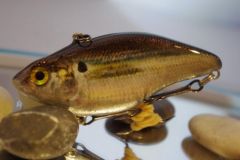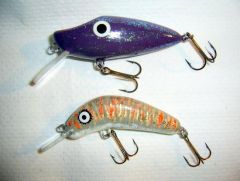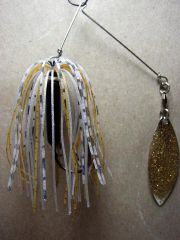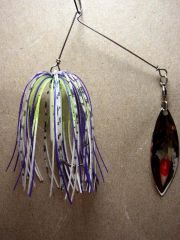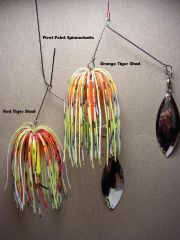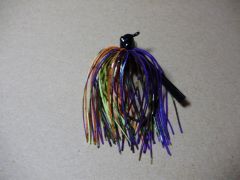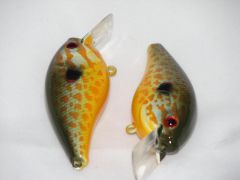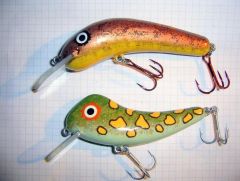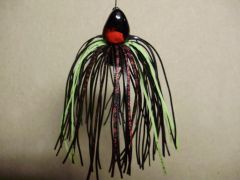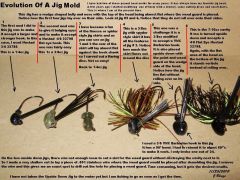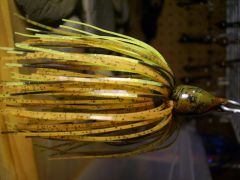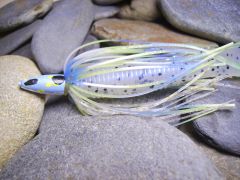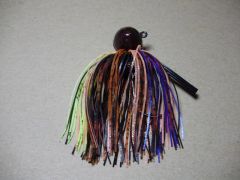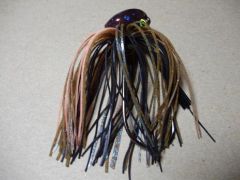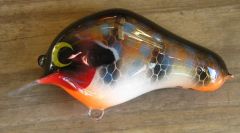Just want to encourage and put a few ideas out there for some of you guys who like to tinker with your molds. If you think long and hard about why and what you want the end results to be, you can usually achieve them. Proceed slowly, and think, think, think about what you are doing. A small mistake, can usually be repaired with a little JB Weld. A large mistake, well maybe it can be repaired. Ruin it, and for a few $’s, most production molds can be replaced. It is much cheaper than having a custom mold built and you may turn out to have something that is very different, special and catches more fish. I have quite a few molds and most of them have been modified in some way or another. I like to think that I have improved on and made them better. This mold has seen my most extensive mold modifications as of yet. All these modifications were done freehand using a dremel with its assorted bits and cutters. Soon, I plan on getting a sliding vice for the drill press. This would make a lot of the modifications much easier to do and more accurate
I have posted in the gallery a series of photos describing the evolution of a peanut head jig http://www.tackleunderground.com/community/gallery/image/7769-evolution-of-a-jig/
(The mold is a Do-It, Weed Less Wally and is no longer in production)
This jig has a wedge shaped head with the narrow edges of the wedge at the nose and at the bottom of the jig. The top of the jig is relatively flat.
Every cavity in this mold has been modified, from the 1/8oz to the 7/16oz size. The last two modification that I made to this mold was to make it accept a 3/0 Barbarian hook in the 3/8oz cavity and a 4/0 Mustad 32798 BLN Flat Eye in the 7/16oz cavity. Both of these hooks were placed in the mold upside down, necessitating moving the weed guard 180º to what used to be the wedge shaped bottom of the jig, which is now the top. There was not enough room between the cavities of the mold to cut a groove/channel for the weed guard so I cut a very shallow groove to be able to lay a short length of .051 stainless wire into the cavity. After removing the jig from the mold, I remove this piece of wire. This makes an exactly centered pinhole to use for drilling a 1/8 hole for the weed guard.
The reason for making this change was that I wanted the jig to sit in an upright stance when at rest without rolling over on its side. With the flat side now on the bottom, and the wedge side on top, it does just that.
(Words of caution, when drilling out the hole for the weed guard, Never hold the jig with your fingers, the bit could bind in the lead and almost always binds/catches when the cutting edge hits the hook shank thus twisting the head in your fingers. If you have never had a hook driven into your fingers or hand, this is a good way to experience it).
I solved this problem by drilling a hole at about a 45º angle in a short length of hardwood 2x4. The hole should be snug on the sides of and deep enough for the jig to slide down into the hole with the top of the jig just barely beneath the surface of the 2x4. Now drill slowly and when the bit contacts the hook shank you will feel it but it will not have enough leverage to twist the jig head out of the hole.
I have quite a few molds and most of them have been modified in some way or another. A few of the cavities have been absolutely butchered because I was careless, in to big of a hurry or did not give enough thought as to the ending result of making the modifications that I was striving for. Fortunately, these were few.
Anyone else like to share with the rest of us how he or she have modified and or butchered his or her molds? John



